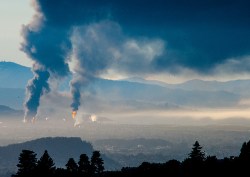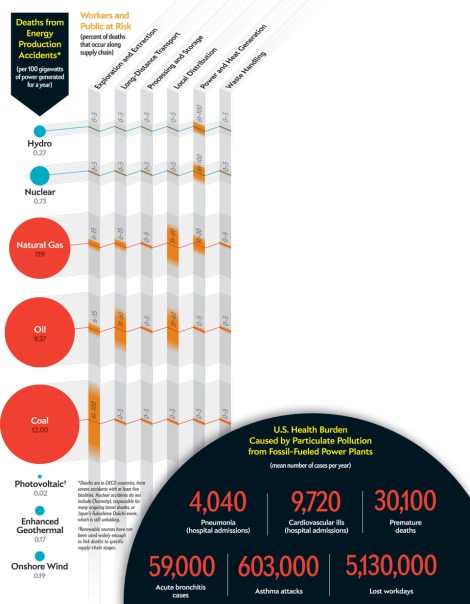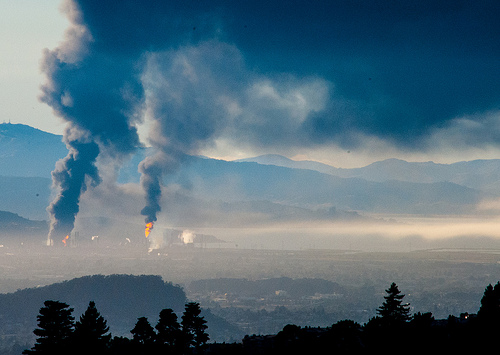
The Chevron oil refinery going up in flames. (Photo by stephen schiller.)
Riding the train in to work Tuesday, I caught sight of a plume of smoke rising from the horizon. A large fire, I later learned, was underway at a major Chevron oil refinery just northeast of San Francisco. No one was seriously hurt, but upwards of 500 people went to the hospital with respiratory complaints, while several thousand were told to stay in their homes.
Following the news of the fire, I haven’t been able to stop thinking about the relationship between health and energy. It’s not an issue that gets much airtime in energy debates. But when we start to look into the health problems our current system is creating and how far existing clean energy technology could go in saving lives, the implications are huge.
To begin with, if it seems like this sort of thing is always happening, that’s because it is. Fossil fuel extraction and processing has become a lot safer in recent years, but it is still inherently dangerous. In the U.S. alone, 3,827 coal miners have died in accidents since 1968, according to the Center for American Progress. Natural gas and oil production have resulted in 892 and 77 deaths, respectively, in those years, as well as almost 14,000 injuries.
The infographic below, from Scientific American, lays out the “human costs” of accidents related to different energy sources. The chart only uses data from countries within the Organization for Economic Cooperation and Development; if we had good numbers for the developing world, the picture would no doubt be much starker. Even in rich countries, coal mining is flat-out deadly. The most dangerous links in the oil supply chain are long-distance transportation and local distribution.

Click to embiggen. (Image courtesy of Scientific American.)
But what is most alarming is the black circle at the bottom of the graph, which shows the impacts of the air pollution created by all of our fossil fuel energy sources. The real issue here, clearly, is that our current energy system produces major negative health effects even when things are going exactly as they should. We don’t factor these effects into the cost of our energy, but they’re very real.
One recent study found that once you calculate the cost of pollution from coal it exceeds the economic benefit of the electricity that coal produces. This study did not take into account long-term costs of climate change brought on by coal-based energy production — only direct health impacts from air pollution.
The plume of smoke on the horizon in Richmond should stand as a reminder of the less visible and much more serious problems in our current energy system. It should also remind us that we have the technology we need to immediately move in the direction of a better world.
There’s no good reason for people in the Bay Area to be coughing today, or for tens of thousands of Americans to continue to come down with much more serious ailments every year. We have everything we need to build a healthier economy right now.


